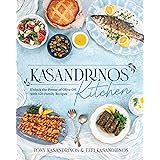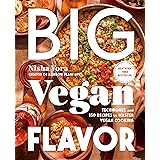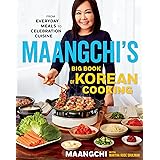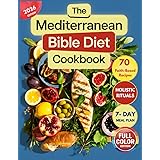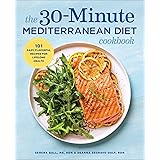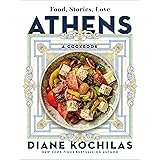The journey to lasting health and sustainable weight management often feels like a winding road filled with conflicting advice and temporary solutions. Many of us have experienced the frustration of extreme diets that promise quick fixes but ultimately lead to burnout and a return to old habits. As the video above, “No BS Weight Loss Hacks & Nutrition Habits that ACTUALLY Work,” insightfully discusses, focusing on controllable, evidence-based behaviors is a far more effective path than chasing a number on the scale. Instead of embarking on restrictive regimens, the secret lies in cultivating gentle, actionable nutrition habits that promote overall well-being and naturally support a healthy weight.
These aren’t about deprivation; they’re about strategic additions and mindful adjustments that integrate seamlessly into your daily life. They’re the kind of sustainable weight loss habits that empower you to make nourishing choices, feel satisfied, and enjoy your food without an “all or nothing” mentality. Let’s delve deeper into these practical, gentle nutrition habits that truly work, expanding on the valuable insights shared by Abbey.
Prioritizing Protein: The Cornerstone of Satiety and Metabolism
When it comes to managing hunger and supporting a healthy metabolism, protein reigns supreme. It’s often referred to as the “king in the satiety hierarchy” for good reason. Integrating sufficient protein into every meal and most snacks is perhaps one of the most impactful healthy habits you can adopt for sustainable weight loss and improved energy levels.
Consider the science: adequate protein intake is crucial for maintaining lean muscle mass, which plays a vital role in metabolic health and longevity as we age. When you’re aiming for a calorie deficit, prioritizing protein helps preserve muscle while encouraging fat loss. Research highlights this effect, suggesting that individuals spontaneously consumed 400 fewer calories per day when their protein intake increased from 15% to 30% of their total daily calories. This isn’t about forced restriction; it’s about feeling naturally fuller for longer.
To optimize muscle protein synthesis, aim for around 20-35 grams of protein per meal or snack. This could look like a Greek yogurt parfait with nuts and seeds for breakfast, a chicken and veggie stir-fry for lunch, or a handful of edamame as a snack. Adding protein to your plates is like building a robust internal dam against the tide of hunger, ensuring stable blood sugar and energy levels, and increasing the chances of weight loss success without the usual feelings of scarcity.
Cultivating Mindful Eating: Disconnecting from Distractions
In our hyper-connected world, meal times often double as scrolling sessions, catching up on emails, or binging a show. However, as the video underscores, implementing a “no phones at mealtime” rule, though challenging, can be a game-changer for your relationship with food and your caloric intake. It’s like trying to enjoy a symphony with headphones on; you miss the richness and nuance of the experience.
Distractions like phones, tablets, and televisions actively interfere with our ability to tune into our body’s natural hunger and fullness cues. Studies reveal that eating while distracted can increase caloric consumption by approximately 15%. This happens because we aren’t truly registering the emotional and sensory satisfaction of our meal. When food is stripped of its sensual satisfaction, we might keep eating past the point of fullness, simply because our brain hasn’t fully acknowledged what we’ve consumed. Making mealtime a device-free zone helps you savor flavors, appreciate textures, and truly listen to your body, fostering a more intuitive approach to eating and serving as a key nutrition habit for weight management.
Enhancing Fiber Intake: Bulking Up with Vegetables
Instead of thinking about what to cut out, embrace an additive approach to nutrition, particularly with fiber-rich vegetables. As Abbey wisely suggests, “bulk up and stretch refined carbs with fiber-rich veg,” rather than simply cutting them down. This method is akin to adding ballast to a ship; it creates a feeling of fullness and stability without sacrificing the enjoyment of your favorite foods.
Incorporating zucchini ribbons into your pasta, finely diced carrots into your rice, or extra spinach into a casserole transforms a low-fiber, less nutrient-dense meal into one that is far more satiating. The added fiber from vegetables contributes volume and promotes satiety, a critical factor for sustainable weight loss. Even if you maintain your usual portion of refined carbs, the presence of these veggies often means you’ll feel full and satisfied with less, naturally reducing overall caloric intake without feeling deprived. It also introduces a diversity of micronutrients and supports a healthy gut microbiome.
Choosing Fats with Purpose: Harnessing Whole Food Sources
Fats are an essential part of a healthy diet, particularly when balanced with protein and fiber, forming what Abbey calls the “hunger crushing combo.” While oils are useful for cooking and dressings, consciously choosing whole food fat sources can significantly enhance satiety and nutrient intake. Think of it like opting for a multi-tool instead of a single-purpose wrench; you get more benefits from one source.
Foods like avocado exemplify this “dual citizenship” benefit, offering healthy fats alongside a generous dose of fiber and even some protein. A single avocado, for instance, boasts around 22 grams of satiating fats, 3 grams of protein, and a whopping 10 grams of fiber, making it far more satisfying than an equivalent amount of pure oil. Similarly, whole peanuts provide approximately 14 grams of fats, 7.5 grams of protein, and 2.5 grams of fiber. By opting for these nutrient-dense whole foods—using avocado as a sandwich spread, or nuts and nut butter as a base for sauces—you increase volume, flavor, and the all-important hunger-crushing compounds that support healthy nutrition habits.
Mastering Hydration: The Morning Water Ritual
After hours of sleep, your body is in a state of mild dehydration. Capitalizing on this morning thirst with a simple water ritual can have profound effects on your energy, cognition, and overall health. It’s like waking up your internal garden with a refreshing drink after a long, dry night.
Make it a non-negotiable habit: drink a full glass of water the moment you wake up, even before checking your phone. Then, as your coffee or tea brews, drink another. This simple act is vital for regularity, reducing bloating, supporting energy metabolism, enhancing cognitive performance, and improving joint mobility. While coffee on an empty stomach might not be harmful for everyone, starting with water ensures you’re hydrating your body at a crucial time, setting a positive tone for the day and supporting effective nutrition habits.
Prioritizing Sleep: Limiting Pre-Bedtime Screen Use
In the quest for better health and sustainable weight loss, sleep often gets overlooked, yet its impact is monumental. The suggestion to use parental lock functions to limit phone use before bed might feel like “parenting yourself,” but it’s a powerful strategy to protect your sleep, which in turn influences everything from appetite to metabolism. Consider your phone a bright, noisy neighbor; you wouldn’t invite them into your bedroom just before sleep.
Screens before bed significantly interfere with circadian rhythms and sleep quality. Poor sleep has a cascading effect, negatively impacting appetite regulation, food cravings, blood sugar control, weight gain, cognitive function, attention span, and even immune defenses. If you find yourself endlessly scrolling late into the night, resulting in fragmented sleep, tools like app blockers can be invaluable. Restorative sleep is not a luxury; it’s a foundational pillar of health, far more crucial than catching up on social media trends.
Incorporating Incidental Movement: The Walking Meeting
Exercise doesn’t always need to be a formal, sweat-inducing gym session to “count.” Framing movement as enjoyable and leisurely can actually be more effective, as you’re less likely to compensate with increased food intake afterwards. Think of it as weaving movement seamlessly into the fabric of your day, rather than seeing it as a separate chore.
A brilliant tactic is to take one call or virtual meeting every day while walking. Pop in your earbuds, turn off the camera, and take that boring Zoom conference call while meandering through a local park or residential area. Waiting on hold? Head outdoors. This gentle movement, combined with fresh air, offers a double benefit: improved concentration for those with ADHD or anyone prone to fidgeting, and a boost to your physical and mental well-being without carving out extra time from your busy schedule. It’s a prime example of an easily integrated healthy habit.
Embracing Dietary Variety: The Weekly Fruit and Veg Swap
Variety is not just the spice of life; it’s also a cornerstone of comprehensive nutrition and a thriving gut microbiome. A varied diet is the most reliable way to meet all your body’s nutrient needs, and your gut bacteria literally thrive on diverse food sources. While eating a wide array of fruits and vegetables daily might seem costly, there’s a simple, intentional strategy to achieve this over time.
Instead of buying the same fruits and vegetables every week, make it a point to switch them up. If this week you enjoyed apples and broccoli, next week experiment with kiwis and cauliflower. If spinach was your salad base this week, try kale or mixed greens next week. This practice not only prevents “healthy eating recipe ruts,” which can lead to boredom and abandonment of good intentions, but it’s also a foolproof method to ensure a greater nutrient variety over the long term, strengthening your sustainable weight loss habits.
Streamlining Breakfast: The Mindless Morning Meal Plan
Mornings are often a whirlwind, and the mental energy required to concoct a novel, nutritious breakfast daily can be overwhelming. This often leads to grabbing less ideal options on the go. The solution? Plan three “mindless” protein-rich breakfast concepts that you can rotate and vary effortlessly. This approach is like having a reliable playbook for your mornings, ensuring you always start strong.
A protein-rich breakfast significantly reduces appetite throughout the day and can result in consuming fewer calories at your next meal. Having go-to options like protein oatmeal, a protein smoothie bowl, or a cottage cheese/yogurt parfait, with ingredients always on hand, removes decision fatigue. You can then add slight variations with different fruits, nuts, seeds, or crunchy toppings based on your mood. For a fun twist, Abbey suggests mixing high-sugar cereals with high-fiber whole-grain cereals. This allows you to enjoy a bit of nostalgic sweetness without the blood sugar crash, leveraging an additive approach to nutrition rather than strict avoidance.
Leveraging Fruit as a Natural Sweetener: A Sweet Swap
While there’s no need to eliminate all added sugars, don’t underestimate the inherent sweetness and nutritional power of fruit. Experimenting with fruit as a sweetener is an excellent way to reduce reliance on refined sugars while boosting fiber, vitamins, and antioxidants. It’s like finding a sweeter, healthier shortcut on a familiar path.
Ripe, mashed banana is an incredibly versatile natural sweetener for oatmeal, yogurt, and baked goods. Freeze-dried berries, whether ground or whole, also impart intense flavor, antioxidants, and sweetness. This additive approach—like stirring a ripe banana into your oatmeal—not only cuts back on the need for added brown sugar but also adds volume and satiating nutrition, keeping you fuller longer and contributing to your repertoire of effective nutrition habits.
Mindful Alcohol Consumption: The Two-Sip Rule
Alcohol consumption can have immediate and long-term effects on health, sleep, and weight management. While enjoying an occasional drink is a personal choice, mindful consumption is key to mitigating its less desirable consequences. Think of it as putting speed bumps on the road to ensure a smoother, safer journey.
Alcohol negatively impacts sleep quality, causes dehydration, bloating, and can lower inhibitions, potentially leading to overeating. Current guidelines suggest limiting alcohol to two drinks per week, or no more than two drinks per sitting. To achieve this and prevent hangovers, try Abbey’s “two sips of water in between every sip of alcohol” rule. This simple strategy naturally slows down consumption, keeps you hydrated, and helps curb overindulgence, supporting both your health goals and sustainable weight loss habits.
Strategic Dining Out: Starting with Veggies
Dining out often presents a challenge to healthy eating habits, yet it’s an integral part of modern life. A strategic move when eating out is to always start with a vegetable-based appetizer or salad. This isn’t solely about reducing calories, though research indicates starting a meal with a salad can reduce the meal’s caloric intake by 12%.
More importantly, this strategy serves two critical functions. First, it ensures you get a much-needed boost of fiber, which is often lacking in restaurant fare and can counteract the digestion-slowing effects of rich, indulgent foods. Second, and perhaps most powerfully, it helps break the “all or nothing” mentality that often sabotages healthy choices when dining out. By consciously starting with something nutritious, you signal to your brain that this isn’t a “last supper” before a diet starts, allowing you to make more balanced choices that truly feel good to your body while still satisfying cravings. It’s like setting a positive intention before a big event.
Efficient Meal Prep: Building Blocks, Not Full Meals
Meal prep is often touted as a cornerstone of healthy eating, but it can quickly become monotonous if you’re eating the same complete meal every day. The key to sustainable meal prep is to batch prep versatile meal components rather than entire recipes. This approach is like preparing an array of high-quality ingredients for a chef, rather than pre-cooking every single dish.
Instead of cooking five identical lunches, grill a large batch of chicken breast or tofu, cook a big pot of quinoa or brown rice, and pan-roast a variety of vegetables. With these foundational “building blocks” ready, you can easily reassemble them into diverse meals throughout the week: salads one day, stir-fries another, wraps, bowls, or even tacos. This method keeps your meals exciting and reduces the risk of food boredom, ensuring you’re more likely to enjoy your healthy food and stick to your nutrition habits.
Strategic Food Placement: The Clear Container Trick
Our food choices are heavily influenced by convenience and visibility. To make nutritious options the easy choice, we need to become “good marketers” for our healthy foods. One highly effective technique is to wash and prep all your produce upon returning from the grocery store and store it in clear glass containers at eye level in your fridge. It’s about making healthy food impossible to ignore.
When you arrive home ravenous after a long day, you’ll reach for whatever is most convenient. By having pre-chopped fruits and vegetables staring invitingly at you from the front of the fridge, they become the intuitive, effortless choice. This simple act of strategic visibility significantly increases the likelihood of reaching for nutrient-dense options over less healthy, hidden alternatives, reinforcing your commitment to healthy nutrition habits and sustainable weight loss.
Bonus Hack: Greens in Leftovers
For an effortlessly easy boost of volume, fiber, and nutrients, try this simple bonus hack: whenever you reheat leftovers—homemade or takeout—throw a handful or two of spinach or other leafy greens with a pinch of salt into the bottom of the bowl. As your meal reheats, the greens will wilt and absorb the flavors of the sauce or seasonings, enriching your meal without any additional effort. It’s a clever way to sneak in extra goodness, turning a simple reheat into a mini nutritional upgrade, and consistently supporting your journey towards sustainable weight loss and better health.



